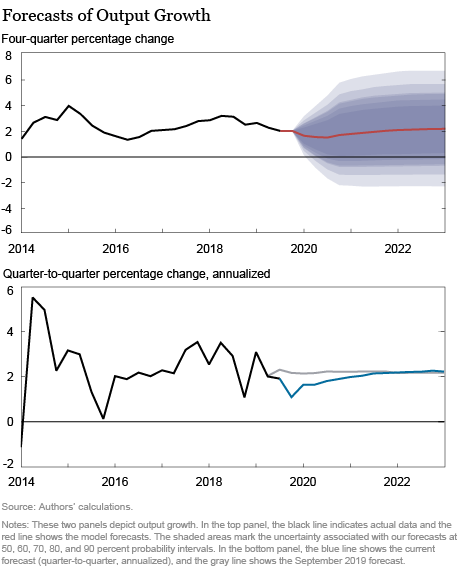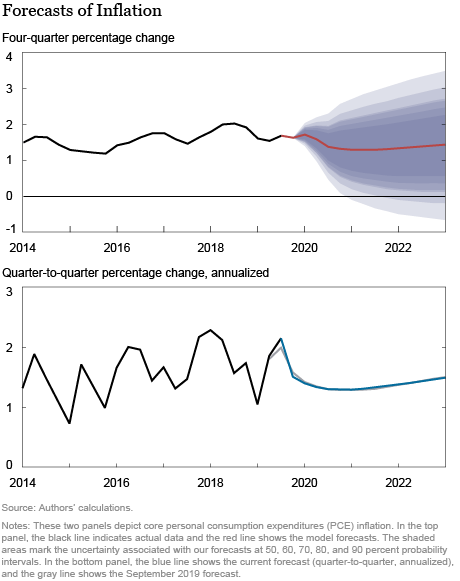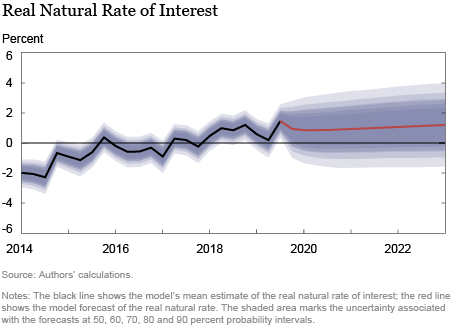This post presents an update of the economic forecasts generated by the Federal Reserve Bank of New York’s dynamic stochastic general equilibrium (DSGE) model. We describe very briefly our forecast and its change since September 2019. As usual, we wish to remind our readers that the DSGE model forecast is not an official New York Fed forecast, but only an input to the Research staff’s overall forecasting process. For more information about the model and variables discussed here, see our DSGE model Q & A.
The December model forecast for 2019-22 is summarized in the table below, alongside the September forecast, and in the following charts. The model uses quarterly macroeconomic data released through the third quarter of 2019, and financial data and staff forecasts available through November 19, 2019.
How do the latest forecasts compare with the September forecasts?
- The current 2019 Q4/Q4 GDP growth forecast is weaker than the one from September (2.0 percent versus 2.4 percent), since 2019:Q3 real GDP growth and the available data from 2019:Q4 were both lower than expected. The model attributes this lower-than-projected growth to a temporary productivity slump, which also weighs on medium-term projections. This negative productivity shock is partly counteracted by accommodative monetary policy.
- The core PCE inflation forecast is unchanged from September. While monetary policy accommodation and negative productivity shocks would each tend to lift inflation, these effects are counterbalanced by negative markup shocks.
- The estimates of the real natural rate of interest are approximately the same as those from September throughout the forecast horizon.





William Chen is a senior research analyst in the Federal Reserve Bank of New York’s Research and Statistics Group.

Marco Del Negro is a vice president in the Bank’s Research and Statistics Group.

Ethan Matlin is a senior research analyst in the Bank’s Research and Statistics Group.

Reca Sarfati is a senior research analyst in the Bank’s Research and Statistics Group.

Andrea Tambalotti is an economist in the Bank’s Research and Statistics Group.
How to cite this post:
William Chen, Marco Del Negro, Ethan Matlin, Reca Sarfati, and Andrea Tambalotti, “The New York Fed DSGE Model Forecast—December 2019,” Federal Reserve Bank of New York Liberty Street Economics, December 20, 2019, https://libertystreeteconomics.newyorkfed.org/2019/12/the-new-york-fed-dsge-model-forecastdecember-2019.html.
Disclaimer
The views expressed in this post are those of the authors and do not necessarily reflect the position of the Federal Reserve Bank of New York or the Federal Reserve System. Any errors or omissions are the responsibility of the authors.










 RSS Feed
RSS Feed Follow Liberty Street Economics
Follow Liberty Street Economics